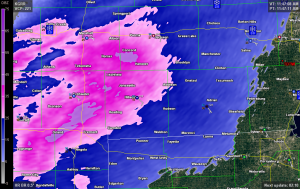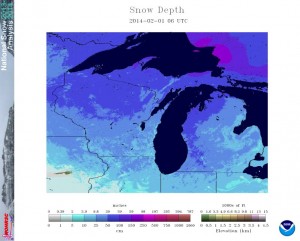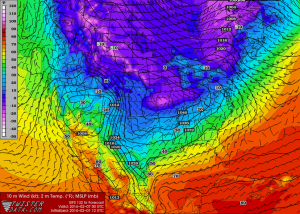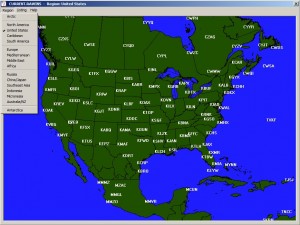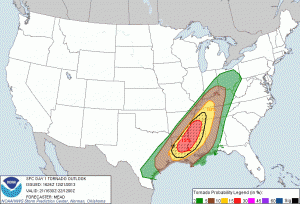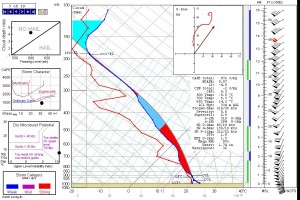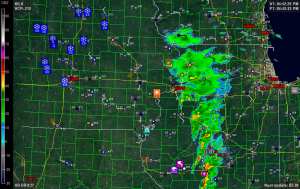 I find this screenshot of the Davenport, Iowa, radar fascinating for its variety. Captured at roughly quarter to five in the afternoon eastern time, it shows just about every conceivable kind of Midwestern weather in operation simultaneously. Tornadoes and funnel clouds. Squall line with embedded supercells. High winds. Hail. Flooding. Snow. Fog. Have I missed anything? If weather systems were baked goods, this one would be an Everything Bagel.*
I find this screenshot of the Davenport, Iowa, radar fascinating for its variety. Captured at roughly quarter to five in the afternoon eastern time, it shows just about every conceivable kind of Midwestern weather in operation simultaneously. Tornadoes and funnel clouds. Squall line with embedded supercells. High winds. Hail. Flooding. Snow. Fog. Have I missed anything? If weather systems were baked goods, this one would be an Everything Bagel.*
As I write, the squall line stretches from eastern Indiana all the way down to south central Louisiana and out into the Gulf of Mexico, and it is progressing eastward, continuing to generate high winds, tornado warnings, and flash floods. All in all, quite an active day for this waning February, particularly considering how far north convective weather has occurred. In the face of this winter’s record-breaking snow and cold, today has been a potent harbinger of what this spring, when it finally arrives, may hold. Even here in Caledonia, we got a few rumbles of thunder, though nothing like what folks a few hundred miles south of us have experienced.
The irony of it is, after this, it’s back to winter again. Serious, snowy, cold winter, with no sign of a letup anytime soon. Eventually, of course, the arctic air will retreat, but not without a fight. Today was just a promissory note, a down-payment, on things to come. I’m in no hurry to collect. In fact, I’d just as soon get dumped on–seriously dumped on–just to see how much more snow we can squeeze out of this winter before a warmer pattern sets in. We’ve already experienced unreal; let’s shoot for insane. We’ve come this far, so what the heck, let’s do this thing right.
But then–let’s have spring. I’m lightning-starved and thunder-hungry.
—————————–
* That is one of the worst analogies I’ve ever come up with, but I don’t care. Well, I care enough to write this footnote, but that’s all.
